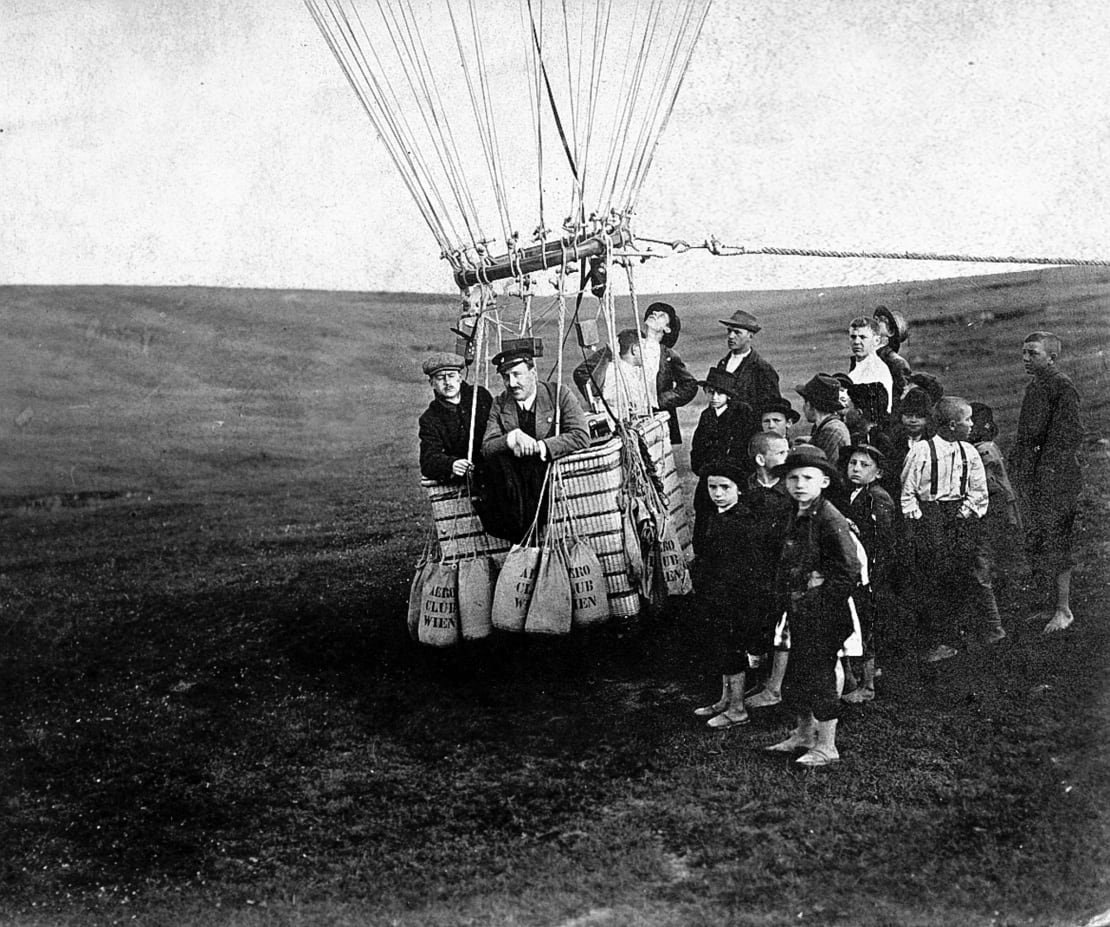Hess discovers cosmic rays
In 1911 and 1912, Austrian physicist Victor Franz Hess carried out a series of experiments measuring radiation in Earth’s atmosphere by ascending in a hydrogen balloon with ionization measuring devices. At the time, the prevailing theory was that radiation was coming from rocks on Earth; if this was the case, the ionization rate should be lower at higher altitudes. During earlier experiments and Hess’s previous flights, the ionization rate did not change, leading them to believe that the radiation couldn’t be coming from Earth.
On August 7, 1912, Hess took a balloon flight 5,300 meters (17,400 feet) above Germany. That day, there was a near-total eclipse of the sun, but the ionization rate was no lower, showing that the radiation couldn’t be coming from the sun. In fact, it was coming from much farther away in outer space. Hess had discovered cosmic rays.
Hess received the 1936 Nobel Prize in Physics for this discovery.
